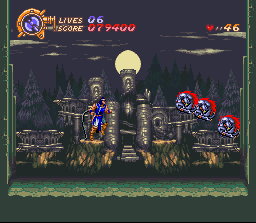

If they lose a game, they’re fried to death. Their wrists are locked in manacles that shock them whenever they make a mistake. The first occurs as our hero finds a fenced-in arcade where kids are chained to video game machines.

Of the video’s many scenes of suffering, there are two big standouts.

Some of the less monstrous extras appear to be outcasts from L.A.’s Skid Row (whose hordes of homeless the LAPD was desperately trying to “ clean up” on the eve of the 1984 Summer Olympics). Their vacant stares are fearsome, but also touched with overarching sadness and tragedy.
DANCING IN PHANTASMIC HELL CRACKED
A balding middle-aged man limps along in filthy business attire wearing a cracked pair of reading glasses. One zombie can be seen clutching a grocery cart filled with sundry garbage (a boom box, a broken record, scraps of fabric) while dressed in a tattered trench coat. Several images here signify economic blight. The hapless creatures are pressed into electronic torture chambers by cyborg storm troopers armed with glow-in-the-dark cattle prods. Freakish processions of enslaved deformity mob the kid: shambolic zombies, doomed souls covered in infectious scars and pockmarks, and hastily assembled androids (including one that’s extremely Borg -like in appearance, years before the Star Trek: The Next Generation characters made their debut). The elevator doors open to an attack of screaming riffage that ushers our hero into a murky, post-industrial Hades. The kid gets in the elevator, going up, then makes a sudden high speed plummet as the guitar distortion kicks in, crashing deep beneath the Earth’s crust. As he enters the building, the music chimes along with a folky lilt and forlorn vocals describing “a ship without a storm.” Confused and annoyed, the teenager avoids the mysterious hairball. Once he arrives at his office-plex destination, a beardo in an old sports car (Dio member Claude Schnell) gestures ominously with the sign of the horns, possibly an attempt to stop the kid from entering the glassy industrial space. Sporting long curls, a dangling earing, and tight Levi’s, it would’ve been tough to find another actor who looked more like a young suburban rocker. The clip starts off with a courier (child star Meeno Peluce ) bicycling in a peaceful California suburb, gliding through a squeaky clean business district.

The work he turned in here is a claustrophobic melange of suspense and political subtext, overflowing with scenes of torture and psychological horror. By ‘84, Coscarelli was already well known in the genre circuit for cult classics like Phantasm (1979) and The Beastmaster (1982). No heavy metal chiller got more immersive or confrontational than the 1984 video Don Coscarelli directed for Dio’s “The Last In Line” (watch it here). Iron Maiden, W.A.S.P., Ratt, Mötley Crüe, Judas Priest, and the ever disturbing Ozzy Osbourne were some of the earliest metal acts to dabble in these themes, and headbangers were mega-stoked to find their favorite shredders interspersed among skinny tie New Wave bands, foppish New Romantics, Barnes & Barnes’ “ Fish Heads ,” and all the other tamer acts that typically formed music video programming in the age before American Idol and reality shows.
DANCING IN PHANTASMIC HELL MOVIE
Sans any playful abstraction, these emerged as S&M nightmares brandishing dystopian, Mario Bava-esque atmospherics, and other classic horror movie elements. Often realized by student auteurs working with little to no budget, even the weirdest of these clips didn’t aim for scares.Įarly heavy metal videos were an exception. The first music videos to air on MTV and broadcast television were chaotic blurts of arty nonsense defined by pastel colors, cheesy dance party theatrics, and avant-garde visual effects.


 0 kommentar(er)
0 kommentar(er)
